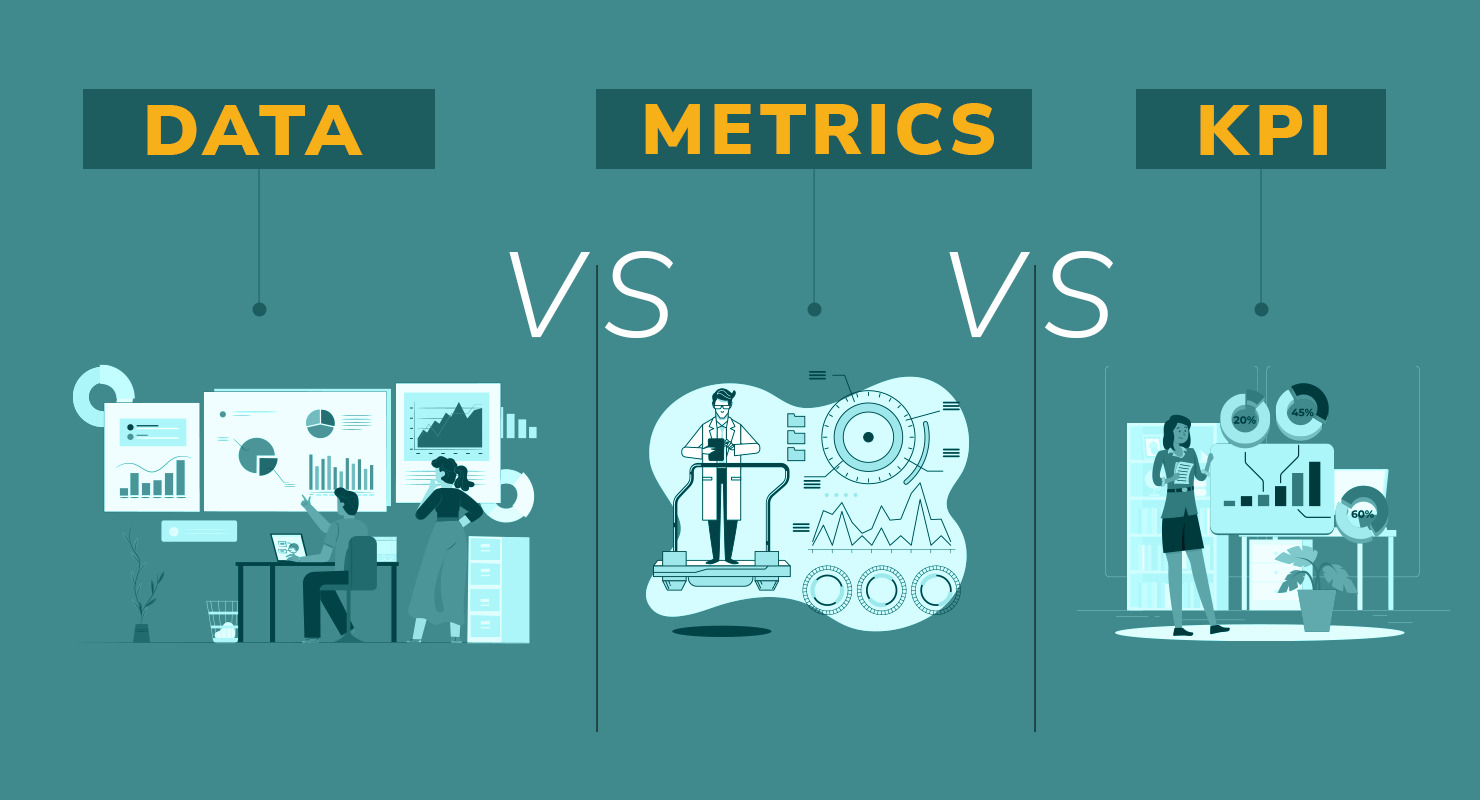Data is increasingly becoming an essential resource for digital marketers due to the fast rate of technological advancement. Consumers now want personalised interactions at all levels. Without the analytics-derived knowledge required to fuel them, it is challenging to offer the highly targeted marketing and campaigns customers have started to demand.
In fact, Statista predicts that by 2025, there are going to be more than 75 billion connected devices in use throughout the world, producing constant flows of data. Companies must develop real time data analytics approaches. These approaches enable them to fully leverage these rich data streams and process them to gain the most precise and current insights they can provide.
A Brief Overview Of Real time Analytics
Real time analytics convert data into insights as soon as it is gathered. When there is a limited amount of time, these insights are utilised. Real time analytics, sometimes called operational intelligence, may forecast a device's approaching failure and alert your operations team before it occurs. It encourages businesses to give clients smartphone promotions when they are around a store. Alternatively, it discovers credit card fraud before the payment is done.
Let's compare real time analytics with conventional analytics, also known as batch processing, in order to understand how it functions. Using the conventional method, limited historical data collections are kept and categorised. Business users run system queries when they require insights.
Typical applications for batch processing include the development of regular reports on sales activity and handling payroll. Batch reporting is ideal for non-time-sensitive operations, while some jobs, like checking patient safety or fraud detection, demand quick insights. This is where real time analytics comes into play.
Types Of Real Time Analytics
There are two main categories of real time data analytics: on-demand and continuous real time data analytics. Let's find out the similarities and differences between the two real time analytics types.
On-demand real time analytics
On-demand real time data analysis is a subset of real time insights in which the system is built to respond quickly to a user's question and offer insights. With an on-demand strategy, users can ask the system anytime they want to acquire helpful information from a process or application.
The system then engages with the data storage and presents the query's findings as useful information. The query results show how the data existed at that particular time. If you are a marketing manager, you can utilise on-demand analytics to find out how consumers respond to an online advertisement in real life on social media platforms.
Continuous real time analytics
The process of continuously consuming and analysing data is known as continuous real time analytics or streaming analytics. This kind of data processing and dynamic analytics produces results in response to variations in the application status.
In this case, the end user doesn't have to query the system to get answers directly; instead, insights are continually streamed or provided depending on incidents or modifications as they take place. The utilisation of edge devices, such as sensors that transmit data continuously and monitor equipment, is part of continuous real time analysis.
Real time Analytics: How Do They Operate?
Like many businesses, you must be thinking about shifting from conventional data analytics to real time data analytics. But wondering how to get started. Here are specific steps to follow:
Gathering valuable real time data
Every organisation has valuable real time data that holds significance. This can include enterprise resource management (ERP) data, encompassing analytical or transactional information. This can be analysed using a  to evaluate operational efficiency. Website application data, such as traffic sources, bounce rates, or daily visitor counts, is another valuable source. Customer relationship management (CRM) data provides insights into customer interests, purchase history, and personal details.
to evaluate operational efficiency. Website application data, such as traffic sources, bounce rates, or daily visitor counts, is another valuable source. Customer relationship management (CRM) data provides insights into customer interests, purchase history, and personal details.
Based on your operations, you can determine the data type important for your company and create a method for collecting it. Let's say you are employed in a manufacturing facility and want to utilise real time analytics to detect flaws in your equipment, and you may gather data from machine sensors and analyse it in real time to check for any warning signals of failure. You require a real time input solution to gather data, and this tool must be able to do it properly from the sources you have.
Integrating data from different sources
Most of the time, you require data from multiple sources to finish an analysis. This means that if you want to analyse client information to find techniques to enhance customer experience, you would need insights from operational sales, advertising, and customer service systems.
You need to assemble the data from all of your sources to accomplish this. To do this, you can transmit the collected data to a location system like a data warehouse using ETL (extract, transform, and load) tools or by creating your own unique data flow.
Collecting insights by analysing data
The last stage is to figure out valuable insights. In this stage, you analyse data by finding underlying connections or patterns using statistical techniques and data visualisations. In this regard, you can use grouping to separate the data sets into multiple categories according to their characteristics and similarities. On the basis of the existing data, predictions could also be made using a model. Users are then provided with the results in an understandable manner.
Real time Analytics Use Cases
Real time analytics can completely change e-commerce companies by providing useful insights that enable faster, more accurate, and more efficient decision-making. E-commerce and online enterprises need to implement an organised approach to decision-making that gives specified logic and allows real time data access in order to get business insights from real time analysis.
Real time analytics for supply chain
Real time data analytics plays a crucial role in increasing supply chain efficiency. Inefficient supply chains are predicted to lead to significant losses, emphasising the need for real time data integration and analysis.
Real time data allows logistics fleet managers to follow cargo fleets, optimise routes, and avoid obstacles for effective delivery. To optimise routes and reduce delivery times, advanced algorithms analyse real time data on fuel consumption, environmental factors, and traffic patterns.
A leading supply chain and logistics provider is Blume Global, which utilises real time analytics to create a centralised platform for accurate information sharing among trading partners and optimise supply chain operations, achieve end-to-end traceability and increase visibility across the supply chain.
To achieve these goals and enhance the resilience and scalability of their CarrierGo SaaS application, Blume decided to migrate data from their Oracle database to the cloud. This migration to Google Cloud enables Blume to quickly provision new MySQL environments and scale up its analytics services, ensuring constant visibility of global freight movements.
Real time analytics for Finance
Real time analytics allows for the correlation, analysis, and execution of financial-related activities on data such as transactional data, corporate updates, exchange rates, and trading data. Since the data is received in massive numbers from multiple sources in a matter of seconds, responding quickly is essential for financial institutions.
Real time data can identify possible price manipulation by gathering data from social media, newsfeeds, and corporate announcements. You may use methods like Generative Adversarial Networks (GANs) to distinguish between genuine and fake stock price data.
The banking industry frequently has trouble catching payment scams and money laundering. The bank suffers a financial loss as well as a loss to its reputation as a market leader. Banks can employ Markov modelling and machine learning to protect themselves against fraud by using real time data.
By transferring their specialised domain understanding of how fraud operates to a collection of principles that can instantly analyse incoming flows of data, banks can apply real time analytics to address this problem.
Real time analytics for manufacturing
A BCG Survey indicates that 72% of manufacturing executives consider advanced data analysis to be essential. And few of them who participated obtained satisfying values from it. There is much potential for improvement, and real time data utilised wisely can boost operational effectiveness.
When working in the manufacturing industry, you can continually utilise real time data to monitor, manage, and optimise industrial operations, such as inventory management. It also enables you to see how your production facility is operating in real time and can warn you regarding any problems. The data can be gathered through the facility's existing machinery, sensors, CRMs, ERPs, and cameras.
There are four ways in which real time data analytics can be used for inventory management: Descriptive analytics, Diagnostic analytics, Predictive analytics and Prescriptive analytics. With these analytics, you can gain valuable insights, optimise inventory management and make informed choices.
Bottom line
For a business to be successful, real time analytics are crucial. It is the ability to gather data as it becomes readily accessible and analyse it in real time. Using the appropriate tools, it is possible to swiftly and effectively extract insights from data, which is essential to business.
While many tools can assist you with analytics, selecting an integrated data platform is the best course of action. You can utilise Weavr to execute vital analytical queries directly within your operational database. There is no requirement for costly custom-built data flows or ETL procedures with no extra costs for data storage.


No comments yet